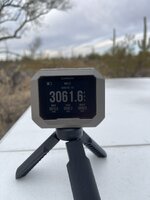There is a Joseph von Benendict podcast with a Hornady dude who went to Africa with a bunch of guys and they killed 7-9 animals each with 22 creed and 22 arc loaded with ELDx. So dozens of animals. And, they talk about Tyler Freel (?) who killed a pile of stuff with his 22 creed.Man believe me... Despite reading all of the threads here, kill results, great evidence for the .224s I was still hesitant. I sent off several messages to folks up to just a couple weeks before I took off for Alaska in September with my 22 Creedmoor. Spent time on the phone with experienced killers asking "am I really good to go here?" haha.
It's just been engrained in our heads all of our lives that "bigger is required" when talking big game animals. It was a bit freeing this year to see what happens in real life.
Get that, they smashed dozens of African game with the 22 creed and arc.
It’s funny because JVB agrees with him but can’t bring himself to endorse 22 creed. At the end, he has to give all sorts of caveats. He always goes to scenarios where he endorses shooting “through the paunch cause that’s the only angle and I know you are going to take it if this is a once in a lifetime hunt and it is your only shot opportunity.” He also repeats his canards about rutted up elk and “penetration” of hunting bullets.
The way he went along with him on this episode but then trashed the Exo podcast makes me wonder. Don’t know him, but it’s a reasonable impression to me that JVB is a good industry man, and he probably believes his opinions. It’s not a conspiracy.
I listen to his podcast quite a bit, some interesting things, but he definitely represents the status quo.
They also talk about how the ELDx is explosive at close range/high velocity and very devastating on game, with no exits. Several DRT.
But, when hit at long range it then exits and leaves blood trails like a good hunting bullet.
It’s only a few episodes later that he goes off about small calibers are not good for game.
Bottom line is the .22 cal bullets kill stuff dead if you put it in the boiler room. There are certainly tradeoffs, but shootability is such a high priority for killing, that we smaller caliber shooters sacrifice the ability to make a Texas heart shot with a Barnes triple shock out of a 300 rum.
All the “rodeos” I have witnessed were because of bad shots and because few have embraced small cartridges, they are all big calibers. Two rodeos were my own, but I ultimately got the deers killed.


